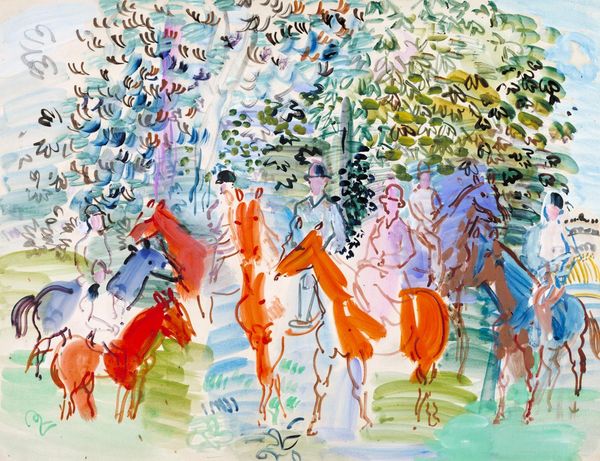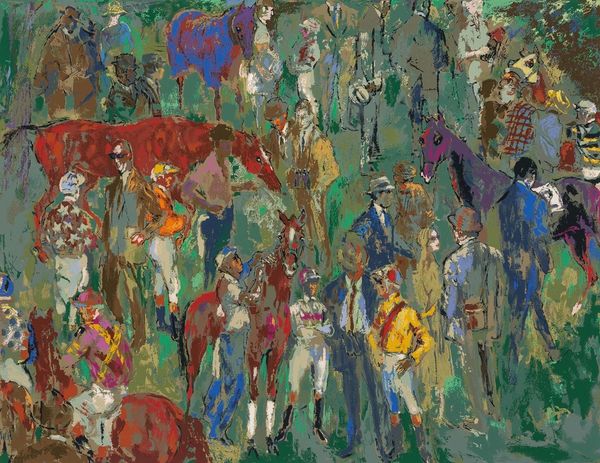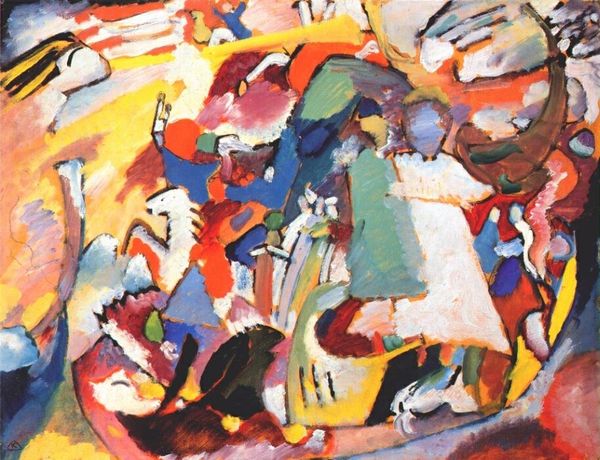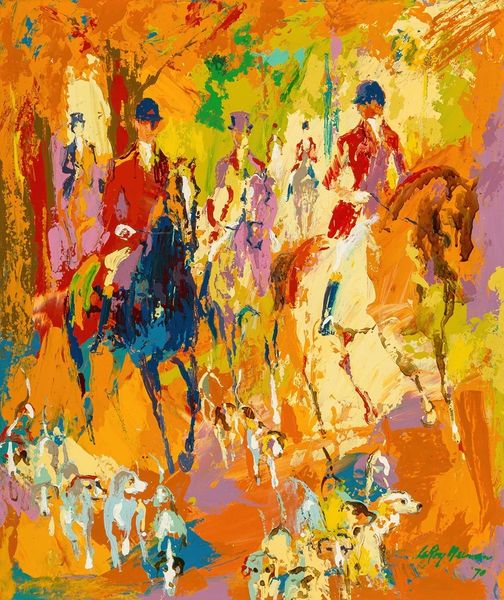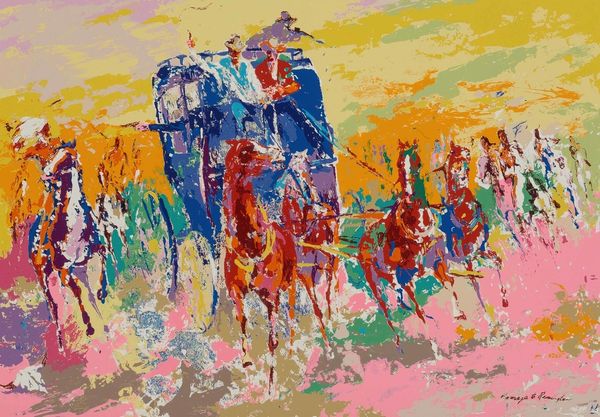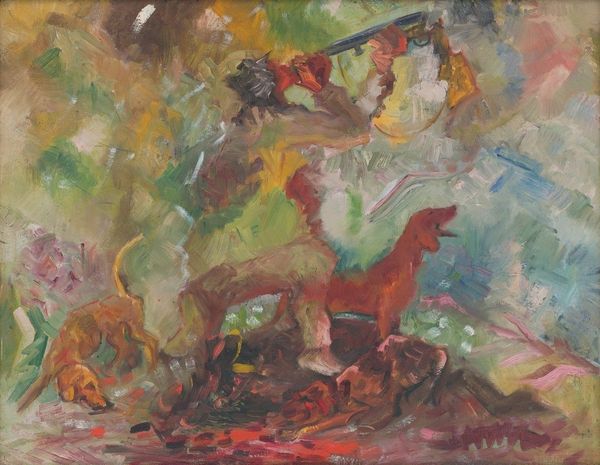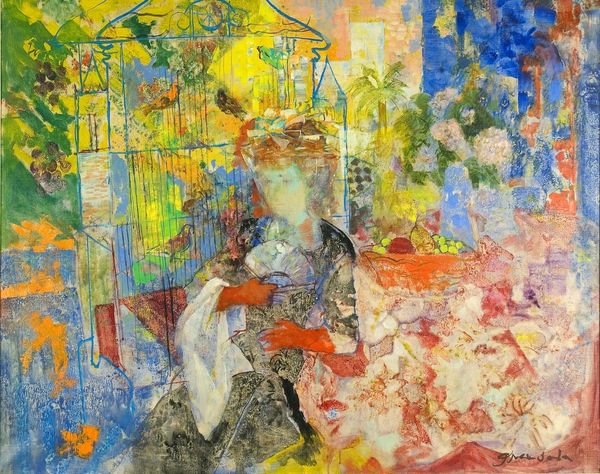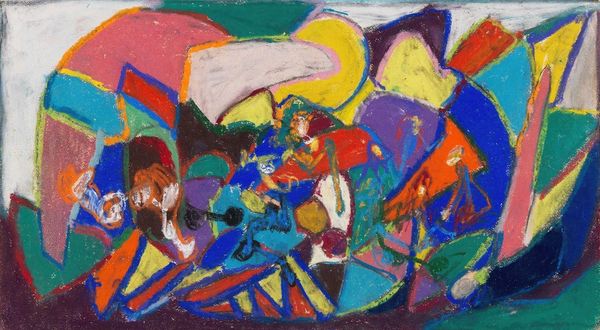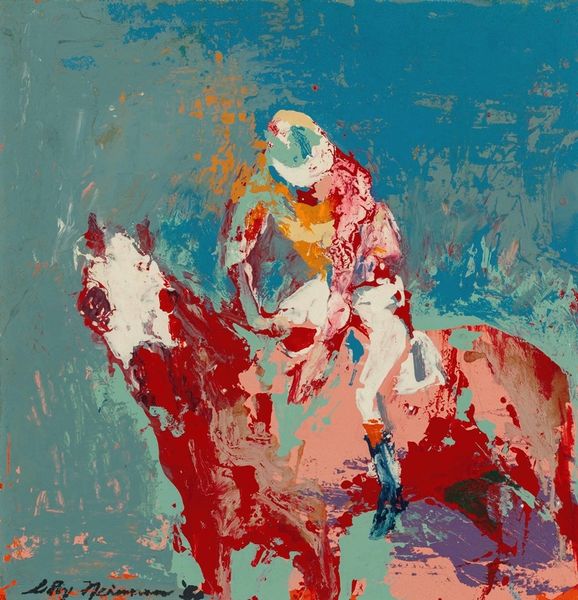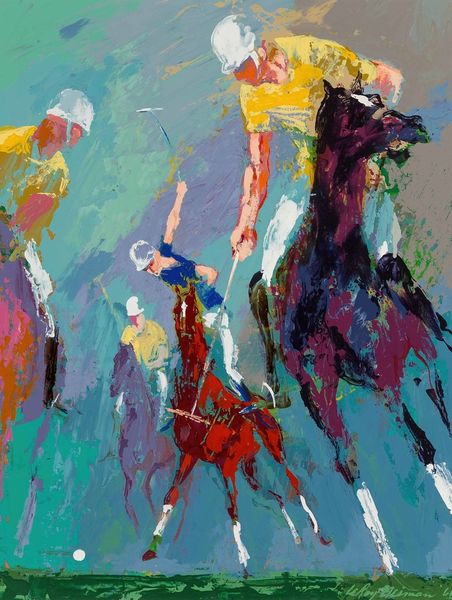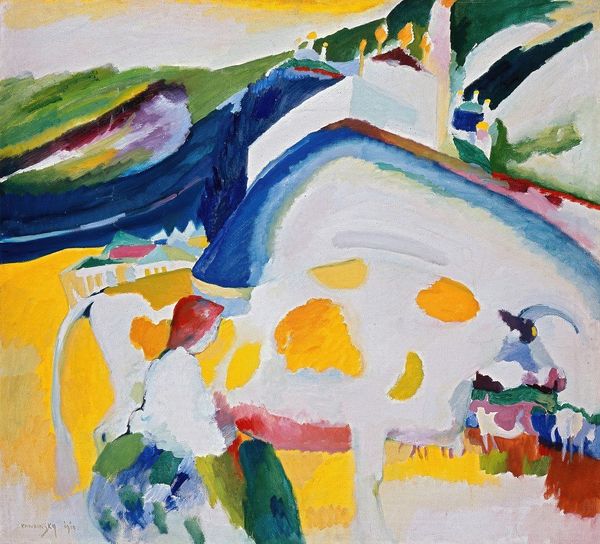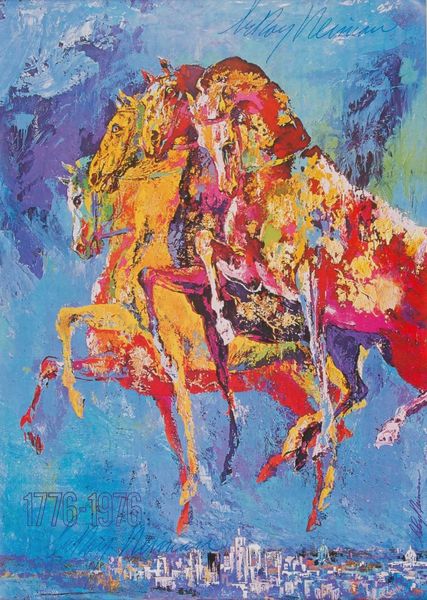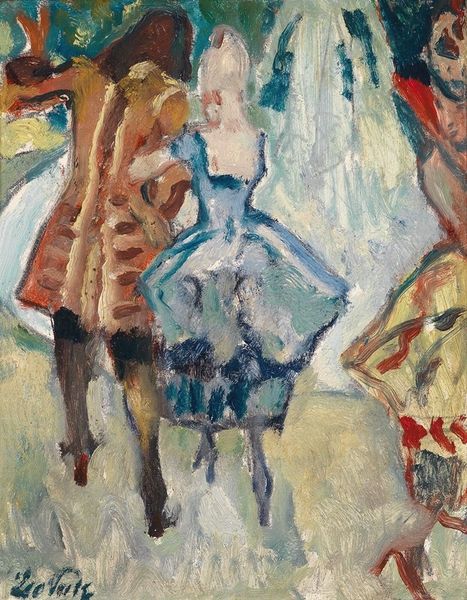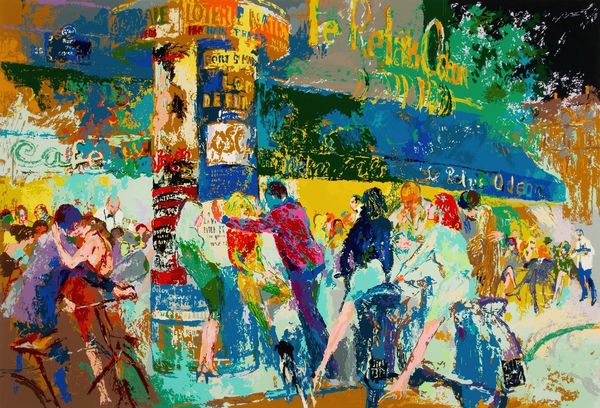
Copyright: Emilio Grau Sala,Fair Use
Editor: So, this is Emilio Grau Sala's "Paddock en Normandie," painted in 1961 using oil paint, I presume? There's an energy to it, almost chaotic with the colors and figures blurring together. It reminds me of a fragmented memory, like a snapshot of a day at the races. What draws your eye when you look at this piece? Curator: I see echoes of a shared cultural experience, wouldn't you agree? The racetrack, a gathering place of society, layered with meaning. Think of the horse, a powerful symbol of status, strength, and even freedom, contrasted against the very formal attire. How do these juxtapositions inform our understanding of social ritual? Editor: That's an interesting take, thinking about the symbols. I hadn’t considered the formality contrasting with the animal spirit. Curator: Consider, too, how the blurred brushstrokes and the pastel palette add to this effect. The symbolism in dress code hints at order but the brushstrokes dissolve such social structures. What memory persists when you move your gaze across the piece? The impression of hierarchy is there, but somewhat dismantled. Editor: I see what you mean, the technique softens what could have been rigid social commentary. Does the post-impressionist style, therefore, undermine the genre painting expectations of the time? Curator: Precisely! It uses the impression of an event, laden with social symbols, but its application refuses a clean reading, and moves instead toward a shared experience that is ephemeral, dissolving such structures in feeling and memory. Editor: This painting is more complex than I first realized. I was just focused on the pretty colors. Now I understand the painting acts as a vehicle for memory, disrupting conventions with its cultural symbols and art style. Curator: Indeed. Hopefully, we’ve all learned a bit more about what symbols and social expectations mean for our cultural memory.
Comments
No comments
Be the first to comment and join the conversation on the ultimate creative platform.
